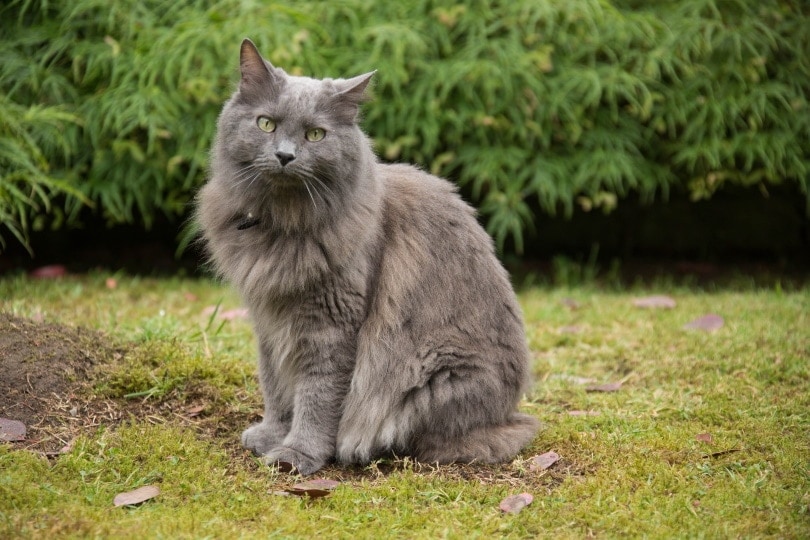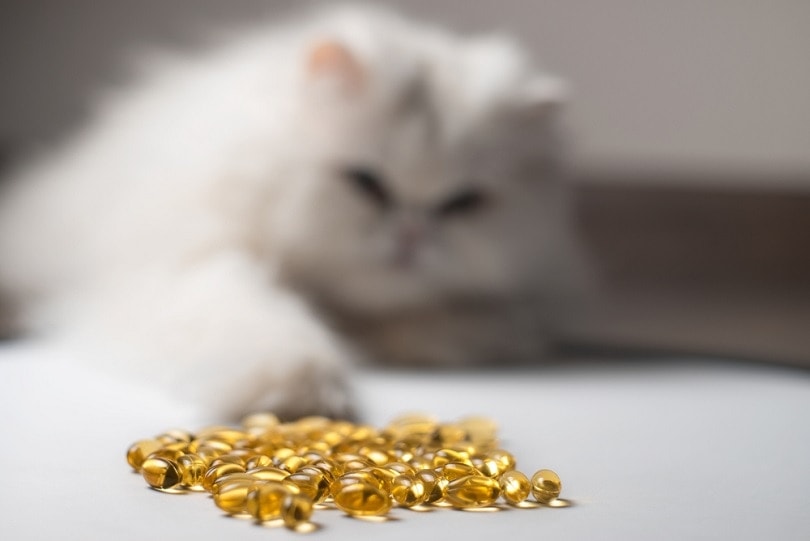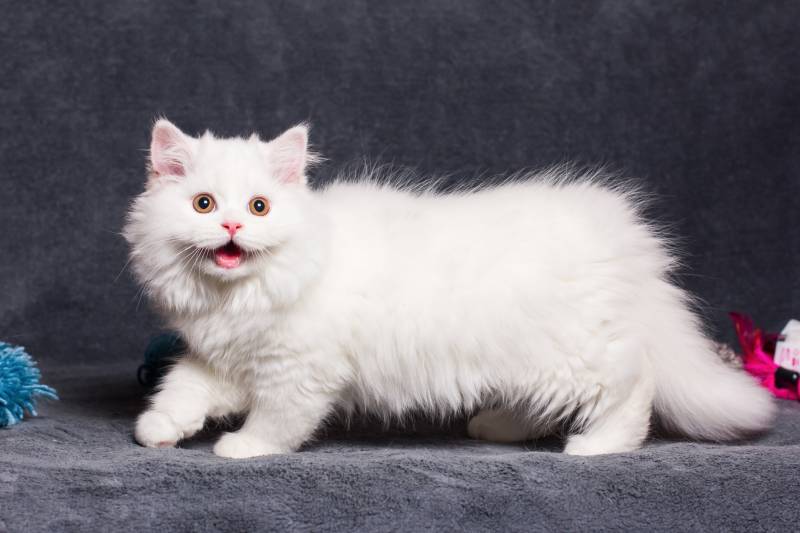What to Feed Stray Cats: 6 Options & How to Do It
Updated on
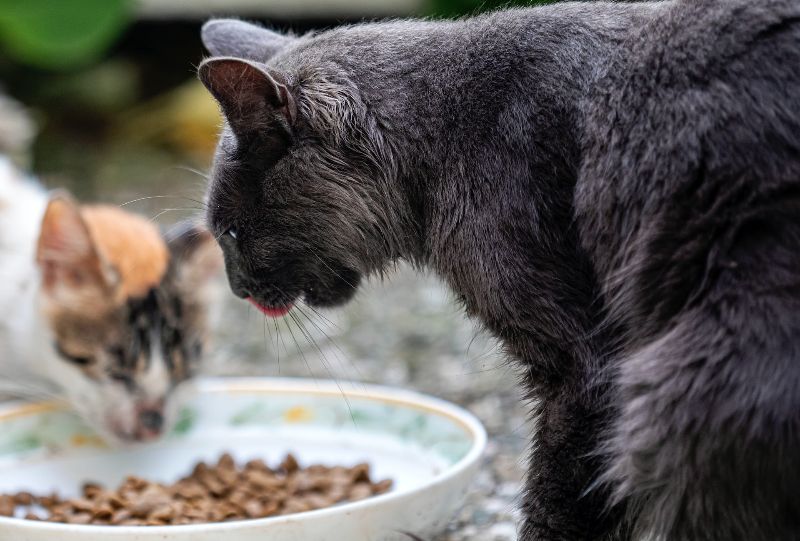
If you regularly see a cat hanging around your home or neighborhood, you might wonder if they’re a stray. If they look hungry and don’t immediately flee when they see you, chances are that you’re looking at a stray. Being a cat lover, you likely want to feed them. Cats are pretty self-sufficient at hunting their dinner, but that depends on whether they can find and catch prey, and during the cold months, they are more likely to go hungry.
If you have found yourself in this situation, you probably want to learn more about what you should (or shouldn’t) feed the cat (or cats, since there’s likely more than one stray), especially if you don’t have any cat food and the stray has just shown up at your door. Below, we review your cat-safe options and which foods you must avoid.
Top 6 Things to Feed Stray Cats
1. Cat Food
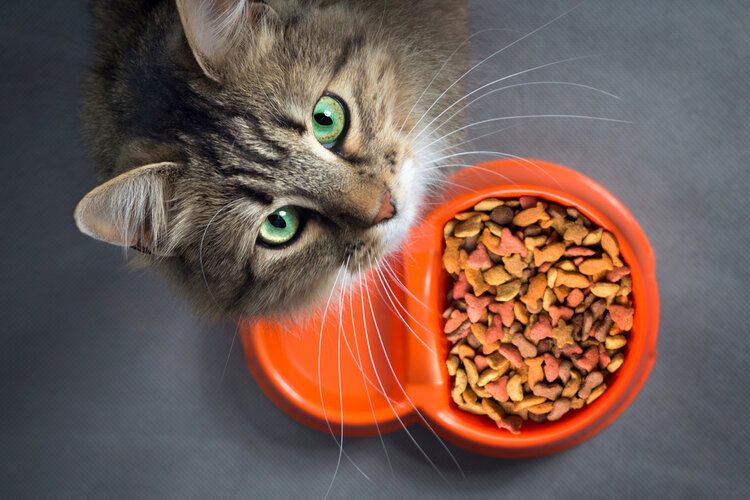
This is an obvious first choice if you already have cat food in your home. There are a few things to consider, particularly if you plan to feed the cat more than once.
You should serve dry food during the summer because wet food will dry out faster and attract bugs. You can only leave out wet food for 30 to 45 minutes. For the most part, food shouldn’t be left out for too long, whether it’s wet or dry food or summer or winter. It can bring unwanted wildlife to your yard.
2. Fish

If you don’t have cat food, you can feed the cat tuna, salmon, or another fish. It is not something that should be done on a regular basis, however.
Using fish when you have nothing else is fine, and it will likely attract a nervous cat but only use canned fish in water. Some fish are canned in oil and salt, and you’ll want to avoid them.
3. Boneless Cooked Meat
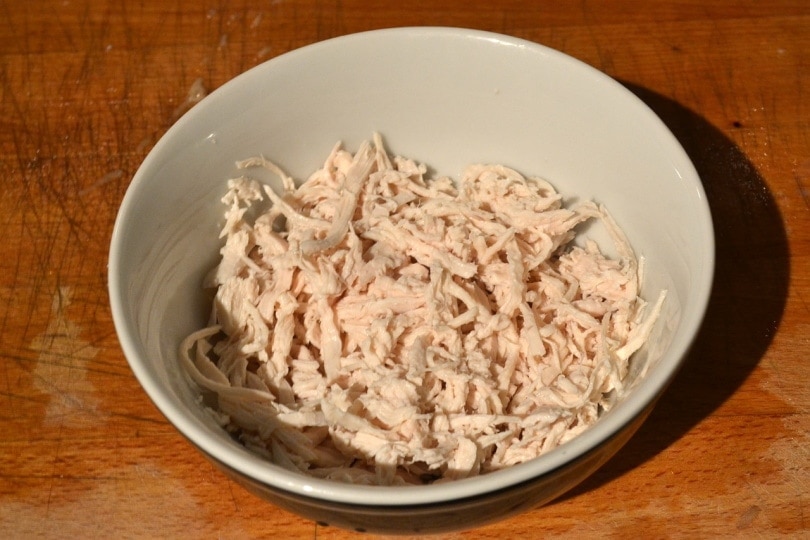
This can be anything from turkey or chicken to beef or lamb. While cats eat raw meat in the wild, cooking it and removing the bones, which can be choking hazards, is always a good idea. Raw meat contains a large amount of bacteria, and a stray cat might already have a compromised immune system.
Also, ensure that the meat doesn’t have seasonings or oils. Don’t give a cat some of your chicken salad covered in mayonnaise and salt; it’s just not a safe choice.
4. Grains

Cats are obligate carnivores and need to eat animal protein to thrive. But if you don’t have any meat in the house, you can serve a few grains. Like canned fish, though, it can’t be the only food to feed a cat on an ongoing basis (unless you offer animal protein with it in the future).
Oatmeal and rice are good options if they are cooked and unseasoned. Plain and cooked only is always best for cats. Some cats might not seem interested in the grains, but it might do the trick if they are hungry enough.
5. Cooked Eggs
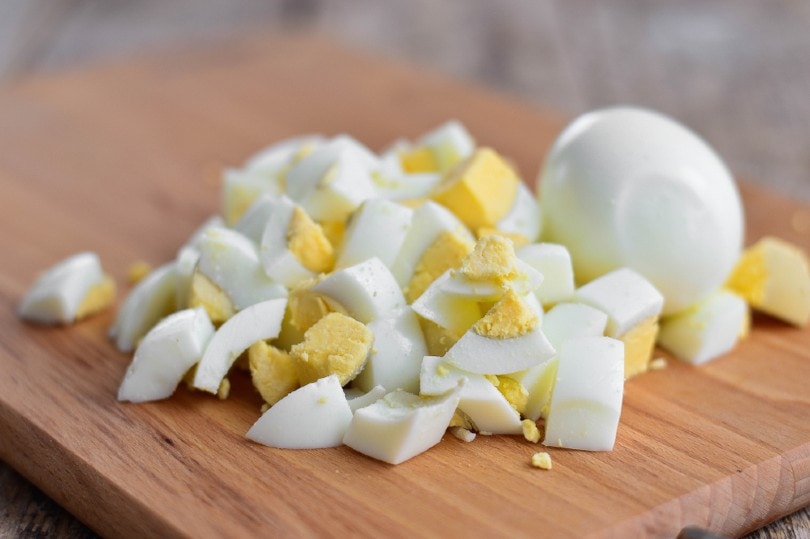
Eggs are an animal protein, so cooked and unseasoned eggs are good options. Chopped-up boiled eggs or scrambled eggs made without oils or butter can also work in a pinch.
6. Fruit and Vegetables

There are a few cooked vegetables that you can try, and they should be cooked and unseasoned. While a pile of cooked broccoli without any butter or salt sounds unappealing to us, cats don’t care.
Like grains, there’s always the chance that strays might not care for the veggies, but it’s still worth a try. Aim for vegetables such as sweet potatoes, carrots, and broccoli. Some fruits, such as cantaloupe and bananas, are also okay.
What Not to Feed Cats
You should avoid giving some foods to any cat, no matter how hungry they are.
1. Dairy
While it’s still being shown in movies and TV, cats and milk are not a good combination. Most cats are lactose intolerant and can experience digestive upset (diarrhea, vomiting, etc.) after ingesting dairy products.
2. Certain Fruits and Vegetables
Some fruits and veggies are safe for cats, while others can be quite dangerous. Anything with onions and garlic (and everything in the same family, such as chives and shallots) is quite toxic to cats. You should also avoid raw potatoes, green tomatoes, grapes, raisins, and avocados. If in doubt about a food, look it up online before giving it to any strays.
3. Dog Food
If you don’t have any cat food but you have dog food lying around, don’t use it. Dog food has been specially formulated for a dog and could make a cat sick.
What’s Next?
If you’ve fed the cat once and plan to continue feeding them, you’ll want to get cat food. They need food roughly every 8 to 10 hours, and you should put out fresh water with the food, too. Remember to change it regularly.
Beyond feeding the cat, you might want to take a photo and circulate it around your neighborhood. Hopefully, there’s an owner out there looking for their cat. If not, you can take the cat to a rescue organization or speak to a vet in your area. You might even decide to adopt it yourself.
Conclusion
If you’re completely unprepared to feed a cat, you have several options. You can then stock up on cat food because once the cat has eaten something you’ve provided, they will return for more. Beyond feeding a stray cat, you can try to find them a home. The safest place for any cat is where they are cared for, fed, and loved.
Featured Image Credit: Hulki Okan Tabak, Unsplash



